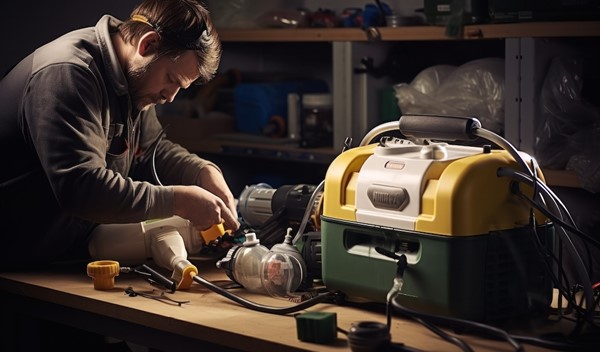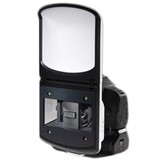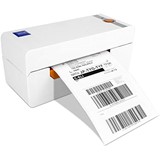In the realm of medical equipment, the portable suction machine stands as a vital tool for healthcare professionals. Its primary function, to effectively remove fluids, secretions, and debris from a patient's airway or wound site, makes it indispensable in critical and emergency care scenarios. However, like any other medical apparatus, these devices require meticulous attention to maintenance. In this comprehensive guide, we delve into the intricacies of maintaining portable suction machines, emphasizing the importance of regular upkeep.
I. The Significance of Regular Maintenance
A. Ensuring Device Functionality
The consistent functionality of a portable suction machine is paramount in healthcare settings. Lives often depend on its swift and precise operation. Regular maintenance is the cornerstone of ensuring that the device functions optimally when needed most. By adhering to a well-structured maintenance routine, healthcare providers can minimize the risk of equipment failure during critical moments.
B. Preventing Potential Malfunctions
Even the smallest malfunction or inconsistency in a portable suction machine can lead to suboptimal performance or complete device failure. Malfunctions can occur gradually due to wear and tear or suddenly due to overlooked issues. Regular maintenance helps identify and address potential malfunctions before they escalate, saving time, resources, and most importantly, patient lives.
C. Enhancing Patient Safety
Patient safety is a non-negotiable priority in healthcare. A properly maintained portable suction machine plays a vital role in upholding this commitment. By conducting routine maintenance, healthcare practitioners contribute to a safe healthcare environment, reducing the risk of infections, complications, and adverse events associated with substandard suction.
II. Daily, Weekly, and Monthly Maintenance Checklist
Maintaining your portable suction machine is paramount to ensure its reliable performance and the safety of both patients and healthcare providers. This section outlines a comprehensive checklist for daily, weekly, and monthly maintenance tasks. Adhering to these tasks will not only extend the lifespan of your device but also minimize the risk of unexpected malfunctions.
A. Daily Maintenance Tasks
- Cleaning Exterior Surfaces
- Checking Power Source
- Inspecting Tubing and Connections
- Filter Inspection and Replacement
- Battery Status Check
- Catheter Examination
- Deep Cleaning and Disinfection
- Calibration (if applicable)
- Use a damp, lint-free cloth or medical-grade disinfectant wipes to clean the external surfaces of the suction machine.
- Pay special attention to areas that come into contact with bodily fluids or contaminants.
- Ensure that no cleaning agents or moisture enters the device's interior.
- Verify that the power source, whether it's a battery or AC adapter, is fully charged or connected.
- In the case of a battery, check for any signs of damage, leakage, or corrosion on the battery terminals.
- Replace the battery if any abnormalities are detected.
- Examine the tubing for kinks, cracks, or blockages.
- Ensure that all connections, including those for catheters and filters, are secure and leak-free.
- Any damaged or compromised components should be replaced immediately.
B. Weekly Maintenance Tasks
- Check the status of the suction machine's filters. Depending on the model, you may have multiple filters.
- If filters are disposable, replace them according to the manufacturer's recommendations or when they appear visibly soiled.
- For reusable filters, follow proper cleaning and disinfection procedures as outlined in the user manual.
- Confirm that the battery continues to hold a charge within the expected range.
- Monitor for any irregularities in battery performance, such as shorter operating times.
- Recharge or replace the battery as needed.
- Inspect the catheter for any signs of wear, cracks, or damage.
- Ensure that it is free from blockages that may impede suction.
- Replace the catheter if it shows any signs of compromise.
C. Monthly Maintenance Tasks
- Perform a thorough deep cleaning of the entire device, following the manufacturer's guidelines.
- Pay particular attention to areas that are frequently exposed to bodily fluids or contaminants.
- After cleaning, disinfect the device using approved disinfectants and methods.
- Some portable suction machines may require periodic calibration to maintain accuracy.
- Refer to the user manual to determine if calibration is necessary and follow the provided instructions
D. Lubrication of Moving Parts
- If your suction machine has moving parts, such as knobs or switches, consult the user manual for lubrication recommendations.
- Apply lubricant sparingly and as instructed by the manufacturer to prevent over-lubrication.
III. Cleaning and Disinfection Protocols
A. Importance of cleanliness in suction machines
- Cleanliness is paramount in maintaining the optimal functioning of portable suction machines.
- Contaminants, such as dust, pathogens, or debris, can compromise the device's performance.
- Regular cleaning prevents clogs and ensures the machine is ready for immediate use in emergencies.
B. Recommended cleaning agents and techniques
- Utilize mild, non-abrasive cleaning agents to avoid damage to sensitive components.
- Isopropyl alcohol (70% or higher) is often recommended for its disinfecting properties and compatibility with medical devices.
- Microfiber or lint-free cloths are suitable for wiping down surfaces without leaving residue or fibers.
- Avoid harsh chemicals, abrasive materials, or excessive moisture that could harm the machine.
C. Proper disinfection procedures
- Disinfection is vital for infection control and patient safety.
- Follow manufacturer-recommended disinfection guidelines specific to your portable suction machine model.
- Pay particular attention to high-touch areas and surfaces that come into contact with bodily fluids.
- Allow disinfectants to sit for the recommended contact time to ensure effectiveness.
- Rinse and dry components thoroughly after disinfection to remove any residual disinfectant.
IV. Proper Storage Practices to Prolong Lifespan
A. Ideal storage conditions
- Store your portable suction machine in a clean, dry, and cool environment.
- Keep it away from direct sunlight, extreme temperatures, and humidity.
- Store the machine in a dedicated, secure location to prevent physical damage or accidental contamination.
B. Protecting against environmental factors
- Use protective covers or cases designed for your specific machine to shield it from dust and environmental contaminants.
- Ensure that storage areas are free from pests that could damage the device.
- Consider installing a dehumidifier in storage spaces with fluctuating humidity levels.
C. Storage tips for long periods of inactivity
- If the machine will not be in use for an extended period, follow the manufacturer's recommendations for long-term storage.
- Remove and properly store the battery to prevent damage or discharge.
- Perform a thorough cleaning and disinfection before storing to prevent microbial growth during storage.
- Regularly inspect the stored machine to ensure it remains in good condition.
V. Inspecting Tubing, Filters, and Catheters
A. The Role of Tubing, Filters, and Catheters
Tubing:
- Tubing serves as the conduit for suction, allowing the transfer of fluids and debris from the patient to the collection canister.
- It must remain free of kinks, cracks, or blockages to ensure efficient suction.
Filters:
- Filters are crucial components that trap contaminants and prevent them from entering the suction pump.
- They safeguard the integrity of the machine and maintain the quality of suction.
Catheters:
- Catheters are the means by which medical professionals access the patient's airway or specific body cavities.
- Proper catheter hygiene is essential to prevent cross-contamination.
B. Signs of Wear and Tear
Tubing:
- Kinks: Inspect tubing for any kinks or bends that restrict the flow of fluids. Replace kinked tubing immediately.
- Cracks or Leaks: Look for visible cracks, holes, or leaks in the tubing. Damaged tubing compromises suction effectiveness.
- Blockages: Check for blockages within the tubing. Obstructions hinder the suction process and may require clearing or replacement.
Filters:
- Clogging: Filters may become clogged with collected debris. Replace filters if you notice reduced suction power or increased noise during operation.
- Visual Inspection: Examine filters for tears or damage. Even minor damage can compromise their effectiveness.
Catheters:
- Contamination: Ensure that catheters are clean and free from any contamination before use.
- Damage: Visually inspect catheters for any damage or wear. Replace them if you detect any issues.
C. When and How to Replace These Components
Tubing:
- Replace tubing immediately if you identify kinks, cracks, or blockages that cannot be cleared.
- It's advisable to replace tubing regularly as part of preventive maintenance to ensure optimal performance.
Filters:
- Replace filters as per the manufacturer's recommended schedule or when you notice a decrease in suction power.
- Always use filters specified for your suction machine model to maintain optimal performance.
Catheters:
- Replace catheters after each use to minimize the risk of cross-contamination.
- Follow the guidelines provided by your healthcare facility for proper disposal or sterilization of used catheters.
VI. Battery Care and Charging Guidelines
Portable suction machines, understanding the nuances of battery care and charging is essential to ensure the device's reliable performance when it matters most. This section delves into the types of batteries commonly employed in these machines, outlines the best practices for charging, and provides insights on how to extend the battery lifespan.
A. Battery Types Commonly Used in Portable Suction Machines
- Lead-Acid Batteries: Some portable suction machines utilize lead-acid batteries, known for their durability and cost-effectiveness. These batteries are heavy but provide a consistent power supply. They require periodic maintenance to ensure optimal performance.
- Lithium-Ion Batteries: Lithium-ion batteries are lightweight and offer a higher energy density, making them a popular choice. They are known for their longevity, quick charging capability, and minimal maintenance requirements. However, proper care is still crucial to maximize their lifespan.
B. Charging Best Practices
- Follow Manufacturer's Instructions: Always adhere to the manufacturer's recommendations regarding charging. These instructions are tailored to the specific battery type and the portable suction machine model.
- Use the Provided Charger: To prevent compatibility issues and potential damage to the battery, use the charger that comes with the device. Avoid third-party chargers, as they may not provide the correct voltage and current.
- Avoid Overcharging: Overcharging can lead to reduced battery life and even safety hazards. Most modern portable suction machines are equipped with smart charging circuits that prevent overcharging. Nevertheless, it's essential to disconnect the charger once the battery is fully charged.
- Maintain the Correct Charging Temperature: Extreme temperatures, both hot and cold, can adversely affect battery performance. Charge the battery within the recommended temperature range provided in the user manual.
- Regularly Inspect Charging Cables: Ensure the charging cables and connectors are in good condition. Damaged cables can lead to improper charging or, in some cases, pose a safety risk.
C. Maximizing Battery Lifespan
- Partial Discharge and Recharge: Lithium-ion batteries benefit from regular partial discharges and recharges rather than running them down to empty before charging. This practice can help prolong battery life.
- Storage Considerations: If the portable suction machine is not in use for an extended period, store it with the battery at around 50% charge in a cool, dry place. Avoid fully charging or discharging the battery before storage.
- Battery Replacement: Over time, even with proper care, batteries degrade. Refer to the user manual for guidance on when to replace the battery. Investing in a high-quality replacement battery is essential for continued reliable performance.
VII. Troubleshooting Common Issues
A. Identifying Common Problems
- Sudden loss of suction power
- Unusual noises during operation
- Battery not holding a charge
- Catheter or tubing blockages
- Device not turning on
B. Step-by-Step Troubleshooting Guide
To address these common issues effectively, follow these steps:
- Sudden Loss of Suction Power
- Unusual Noises During Operation
- Battery Not Holding a Charge
- Catheter or Tubing Blockages
- Device Not Turning On
- Check tubing and connections for kinks or blockages.
- Examine the filter for clogs and replace if necessary.
- Ensure the battery is sufficiently charged.
- Inspect the tubing and catheter for obstructions.
- Check for loose or damaged components.
- Lubricate moving parts if needed.
- Verify the charger is functioning correctly.
- Check for battery corrosion and clean if required.
- If the issue persists, consider battery replacement.
- Gently disconnect and inspect the affected parts.
- Clear any obstructions using appropriate cleaning tools.
- Sanitize components before reassembly.
- Confirm that the battery is correctly inserted.
- Check for loose connections and secure them.
- If the device still does not turn on, consult the user manual.
C. When to Contact Support or Seek Professional Help
While many issues can be resolved through troubleshooting, there are instances where professional assistance is necessary. Contact support or seek professional help if:
- You are unable to resolve the problem following troubleshooting steps.
- The issue poses a risk to patient safety or disrupts medical procedures.
- The device displays persistent malfunctions despite maintenance efforts.
VIII. When to Seek Professional Servicing
A. Signs Indicating the Need for Professional Maintenance
Regular maintenance can prevent most issues, but you should seek professional servicing if you notice any of the following signs:
- Unusual or persistent device malfunctions.
- Unexplained drops in suction power.
- Alarming noises that continue after troubleshooting.
- Damage to critical components.
- Any sign of wear that compromises device integrity.
B. Importance of Timely Servicing
Timely servicing is crucial to:
- Ensure patient safety and care quality.
- Prolong the lifespan of your portable suction machine.
- Maintain compliance with healthcare regulations.
- Minimize unexpected downtime during medical procedures.
C. Finding Certified Service Providers
When selecting a service provider, prioritize those with:
- Certification and expertise in portable suction machine servicing.
- Access to genuine replacement parts.
- A reputation for reliability and quick turnaround times.
- Positive reviews and testimonials from healthcare professionals.
IX. Importance of User Manuals for Maintenance
A. Role of User Manuals
User manuals serve as comprehensive guides for:
- Understanding the device's functions and components.
- Learning proper operation and maintenance procedures.
- Troubleshooting common issues effectively.
- Ensuring safe and efficient use of the portable suction machine.
B. Tips for Effectively Using the Manual
To make the most of your user manual:
- Keep it in a readily accessible location.
- Regularly review and update it with any annotations or modifications.
- Train your healthcare staff on how to use and consult the manual.
C. Keeping the Manual Accessible and Updated
- Store the manual in a designated location near the device.
- Make sure all relevant personnel know where to find it.
- Periodically check for updates or revised versions from the manufacturer's website or customer support.
In conclusion, this comprehensive guide underscores the critical importance of regular maintenance for portable suction machines in healthcare settings. These devices, essential for airway management and wound care, demand meticulous upkeep to ensure functionality, prevent malfunctions, and enhance patient safety.




























